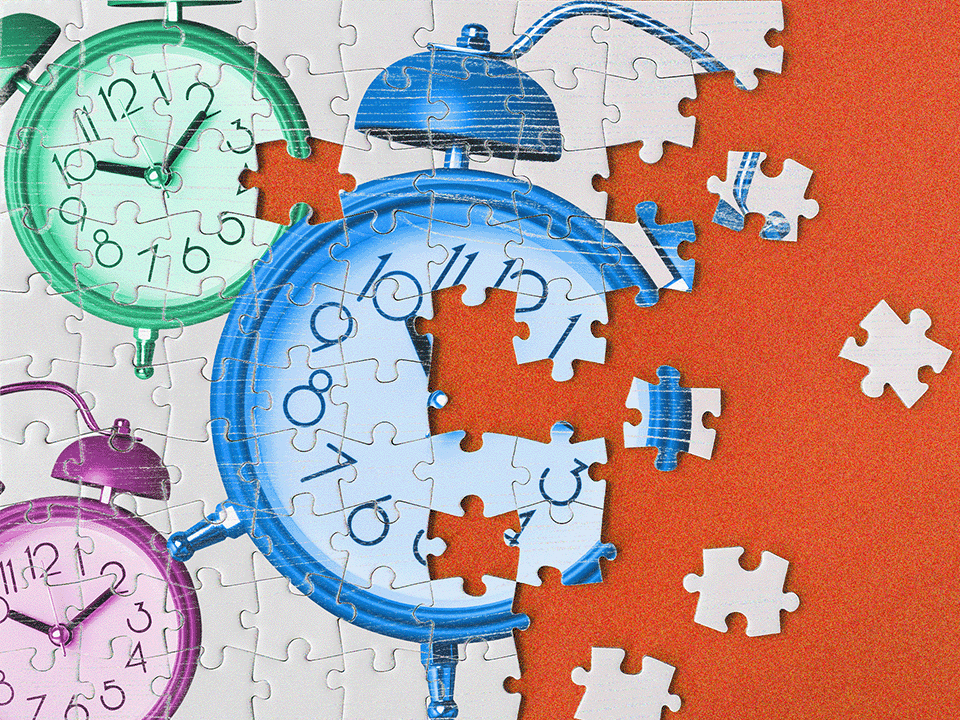If you’re one of the many, many TikTok viewers intrigued by trauma, you’ve probably come across something called complex trauma and complex post-traumatic stress disorder (CPTSD). And, honestly, you’re totally forgiven if you don’t really know what these terms actually mean. Like, isn’t PTSD already complex enough? What makes complex PTSD special enough to get an extra adjective?
As a licensed mental health counselor who focuses on trauma and helping women of color (peep my book, Why Am I Like This? How to Break Cycles, Heal from Trauma, and Restore Your Faith), allow me to explain.
What is complex PTSD, and what causes it?
Worth noting from the jump: CPTSD is not actually in The Diagnostic and Statistical Manual of Mental Disorders (DSM-5-TR). That said, it’s in the World Health Organization’s International Classification of Diseases (ICD-11) manual as of 2018, and many mental health experts (including me) treat it as a legit condition. While PTSD refers to surviving a traumatic event (or multiple events) and the psychological distress that can follow, CPTSD is used to describe the unique effects of exposure to trauma that is often prolonged (lasting months or years at a time), repetitive, and difficult or impossible to escape.
So experiencing stuff like living with an alcoholic parent, growing up in a dangerous neighborhood, facing endless microaggressions, or even surviving human trafficking could lead to CPTSD.
For the most part, complex trauma (like those events or situations above) usually happens when you’re a kid or adolescent and—in my professional experience—it might even feel normal when you’re going through it. That’s partly because it’s inescapable and constant or because the complex trauma wasn’t one distinct and obvious event. And that’s the biggest differentiator between CPTSD and PTSD: trauma related to a specific moment, like a severe car accident, a physical attack, or moments like undergoing treatment for a life-threatening disease, is associated with PTSD, whereas complex trauma can often be more subtle or ongoing.
In case this makes more sense visually, think of trauma like a boulder (stay with me!). A boulder is clearly visible and undeniable. Anyone standing in front of it can see exactly what it is, and there wouldn’t be much debate on whether or not it exists. Complex trauma is like a pebble. It’s there, but it’s not necessarily obvious. But if every step you took was on a pebble, you’d start to feel continual pain that would shape the way you walk and live. Both of these diagnoses can impact you, but the way we see them differs.
What are complex PTSD symptoms?
CPTSD comes with a unique set of symptoms in addition to what people with PTSD experience. In case you need a refresher, PTSD symptoms include re-experiencing the trauma (through flashbacks, nightmares, intrusive thoughts, etc.), actively avoiding thoughts and memories associated with the event(s), and feeling like there’s often a threat lurking (and experiencing all of that for at least several weeks). With CPTSD, you can also expect significant issues related to your self-worth, your relationships, and your ability to regulate your emotions. You’d also often feel defeated, worthless, ashamed, guilty, or like a failure, and you’d struggle in basically every area of your life for weeks at a time, the ICD-11 states.
Basically, with CPTSD, there’s an emphasis on an overall vibe shift in your personality. That could look like having trouble connecting with people, struggling to maintain relationships, showing chronic aggression, and experiencing frequent feelings of abandonment, anger, confusion, or hopelessness. There could also be persistent suicidal thoughts, hypervigilance (like repeatedly checking your surroundings), memory loss, and sometimes nightmares thrown into that mix as well. And these symptoms tend to be more persistent than the symptoms of traditional PTSD.
Honestly, we need a lot more research to explain the mechanism behind chronic trauma and CPTSD symptoms. But, some studies cite a correlation between changes in the parts of the brain that deal with memory and emotions and CPTSD. Another more recent study (though small and imperfect) found that child and young adult CPTSD survivors showed “more variable” heart rate responses to emotional words (think: swearing or threatening) than the PTSD group, which could point to those brain differences. There’s also the possibility that genetics or someone’s social support system (or lack thereof) plays a role in whether someone develops CPTSD, suggests a 2020 article from the peer-reviewed British Journal of Psychiatry.
Side note: When experts or clients talk about complex PTSD, borderline personality disorder is often referenced because the symptoms (like hopelessness, low self-esteem, fear of abandonment, and trouble managing emotions) can overlap, and the conditions can be mistaken for each other. But, from what I’ve observed over the years, there are a couple big differences between the two. For starters, trauma isn’t always the cause of borderline personality disorder, but it’s always present in CPTSD cases. And people with complex PTSD often seem to normalize or hide their intense, difficult emotions, while people with borderline personality disorder may become overwhelmed and seemingly controlled by their intense emotions.
How do I know if I have complex PTSD?
Speaking to a professional is always the best option. Without any official DSM-5-TR CPTSD diagnostic criteria, therapists typically base their professional opinions on the ICD-11 criteria and your responses to several questions about things like your support system, confidence, and general well-being. Therapists also use methods like the International Trauma Questionnaire, which asks questions like, “In the past month, have you felt jumpy or easily startled?” and “Recently, have you had upsetting dreams related to your trauma?” Another expert resource, the Adverse Childhood Experience questionnaire, asks questions like, “Did a parent or adult in your home ever swear at you, insult you, or put you down?” and “Were your parents ever separated or divorced?” to get a better idea of your background.
That said, going through extremely tough times or having a sucky childhood doesn’t automatically mean you have CPTSD, as the ICD-11 states. It’s possible to survive bad experiences and not meet the diagnostic criteria, which is why it’s important to consider if you meet all the required symptoms of CPTSD too. Taken together, all your responses can help an expert piece together your story and how your past experiences are impacting you today.
Without a professional’s help, it’s hard to accurately see your experiences for what they are, but one way to try is by asking yourself: “What events, big or little, have influenced how I show up today? Are there any areas of my life that I feel are significantly and negatively impacted? Do my experiences line up with those PTSD and CPTSD symptoms mentioned above?” Just remember that not all symptoms happen at the same time, so it’s OK if you feel different each time you revisit that list.
How is complex PTSD treated?
Because trauma is deeply personal and, yup, complex, one person’s treatment will look different from the next person’s. So talking to a trusted pro who can create a long-term plan is best. For anyone worried about having to relive every single bad memory, you can happily unclench your jaw because not all therapies make you detail everything. But, if you want to feel better, you will have to talk about some things. Those topics will become clear to you and your provider when the time’s right.
Because CPTSD research is limited, most experts look to popular PTSD treatments. Some people prefer trauma-informed talk therapy, which is an established method for treating PTSD and looks promising for anyone with CPTSD, suggests a 2019 systemic review and meta analysis. In my practice, we’re fans of eye movement desensitization and reprocessing (EMDR), which is another tried and true PTSD treatment. This type of trauma therapy involves moving your eyes in a certain way that might help you process unpleasant memories. Ultimately, the goal is for you to face the distorted beliefs that you have about yourself.
You might even respond to somatic (body-focused) therapies, which help you identify and release physical tension associated with painful memories. More treatments include brainspotting (using your visual field to tap into your long-term memory), cognitive processing therapy (learning how to question and change unhelpful beliefs about your trauma), and neurofeedback (measuring brain waves and teaching you to control how you respond to triggers).
There’s also something called psychodrama, which is tapping into your inner thespian and acting out moments from your past as a way to revisit and retell the stories that have shaped your life. Of course, you and your expert buddy can move slowly and take breaks along the way when emotions start to swell. Through this engaging exercise, you can work through your feelings, regain your sense of self, autonomy, and strength in the process.
When you have a better idea of your history, diving into a book on trauma might also make you feel better. Some of my favorite resources are Try Softer and Strong Like Water by therapist Audi Kobler, LPC; Why Am I Like This? by me; Trauma & Addiction by psychologist Tiyan Dayton, PhD; and The Boy Who Was Raised As a Dog by children’s mental health researcher and clinician Bruce Perry, MD, PhD.
In the end, complex PTSD has its name for a reason. Trying to heal it without professional assistance is like trying to perform surgery on yourself. Not only will it likely not work, but it can also cause more pain than necessary. And who wants that? The best gift you can give yourself as someone who might have symptoms of CPTSD is to be honest about your story and let someone else hold your hand through the healing journey.
Wondermind does not provide medical advice, diagnosis, or treatment. Any information published on this website or by this brand is not intended as a replacement for medical advice. Always consult a qualified health or mental health professional with any questions or concerns about your mental health.





